Journal list menu
Export Citations
Download PDFs
Table of Contents
Special issue for biology of the cell “intracellular trafficking of viruses”
- First Published: 25 May 2023
Adenovirus receptors on antigen-presenting cells of the skin
- First Published: 30 July 2022
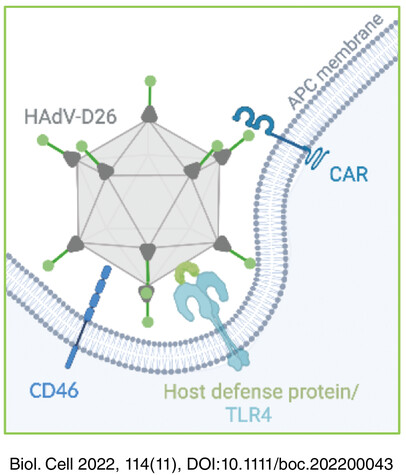
The skin is part of the first line of physical and immunological defense against many pathogens. Understanding how antigen-presenting cells present in the skin respond to viruses or virus-based vaccines is critical to the development of effective and safe antiviral pharmaceuticals and vaccines. Here we discuss how resident and recruited skin antigen-presenting cells engage directly, or indirectly, human adenoviruses, and the impact on innate immune responses.
Ribonucleoprotein transport in Negative Strand RNA viruses
- First Published: 03 October 2022
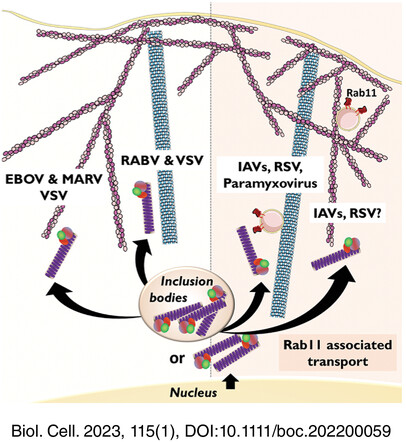
The genome replication of Negative-sense, single-stranded RNA viruses most-often segregate in membrane-less environments called inclusion bodies (IBs). These “organelles” usually locate far from the cell surface from where new virions are released. Here, for each viral family, we discuss how the genome progeny is transported from the IBs to reach the cell surface. We further highlight how the cellular protein Rab11, which has been associated to this process for several viruses, has gained a major importance in the field
Hepatitis B virus movement through the hepatocyte: An update
- First Published: 19 August 2022
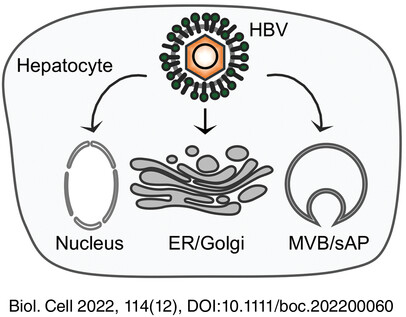
Model of intracellular trafficking routes of progeny hepatitis B virus (HBV) viral and subviral particles through the liver cell involving nucleocytoplasmic shuttling, movement through the ER/Golgi secretory pathway, and budding and release through the multivesicular body (MVB) and/or secretory autophagosomes (sAP) axis.
A snapshot of protein trafficking in SARS-CoV-2 infection
- First Published: 31 October 2022
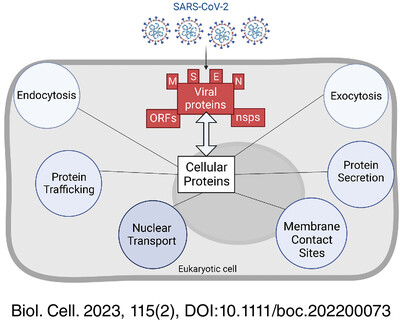
The replication of SARS-CoV-2 in host cells is influenced by cellular proteins, organelles and processes. Viral proteins efficiently modulate host factors and principles that govern endocytosis, nuclear transport, cytoplasmic trafficking of proteins and metabolites, membrane contact sites (MSC) and exocytotic pathways. This review discusses the examples of viral and host factor interactions affecting these processes.
Time-resolved single virus tracking and spectral imaging to understand HIV-1 entry and fusion
- First Published: 28 November 2022
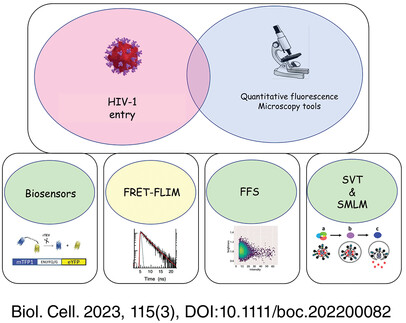
Recent advances in light microscopy have helped to unveil the complexity of HIV-1 fusion. During the last decade, the community has focused on the use of super-resolution techniques; however, in the field of HIV-1 entry, other approaches based on combining single virus tracking with spectroscopy have rendered more details on the mechanism of entry. This review discussed how the use of lifetime imaging or number and brightness combined with real-time single virus tracking in live cells helped to decipher the stoichiometry of the virus fusion reaction, the inter and intramolecular dynamics of the envelope glycoprotein or the role of host cell factors during this process.
Get in and get out: Remodeling of the cellular actin cytoskeleton upon HIV-1 infection
- First Published: 04 January 2023
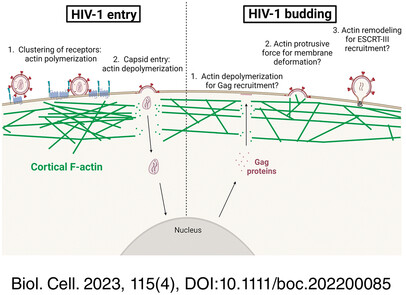
HIV-1 closely interacts with the actin cortex underneath the plasma membrane at two crucial steps of its replication cycle: to get in and get out of cells. Here, we review what is currently known about the role of actin and actin-related proteins in HIV-1 entry, assembly, budding and release, and discuss the remaining challenges regarding the actin-dependent mechanisms involved in HIV-1 entry and exit.





